The health insurance industry is experiencing rapid growth. According to Precedence Research, the global market size of the health insurance sector is projected to reach $5.12 trillion by 2034.
Around 60% of people now prefer using mobile apps to manage their insurance. This shows that more people now want simple but fast ways to damage their insurance. They do not want to visit offices or wait for calls.
Health insurance app development can assist them in checking their policy, purchasing a plan, filing claims, and getting support anytime. Everything from a single tap of a mobile phone.
If you run a health insurance company, now is the perfect time to go online. It can help you reach more users and give you an online presence.
Thus, we will discuss the process of health insurance app development guide along with must-have features, costs, and how you can make money from it.
So, let’s begin!
What is a Health Insurance App?
Health insurance apps allow users to manage their health insurance by using a mobile phone. Users can easily check their health insurance policy, find hospitals or doctors, submit claims, and so on.
For example, if a user goes to the hospital, they can submit a claim directly through a mobile app and simply track its status.
The health insurance app also provides them access to a digital health card, so they do not need to carry a physical one. Users can also chat with customer service within the app.
Market Overview of Health Insurance Apps
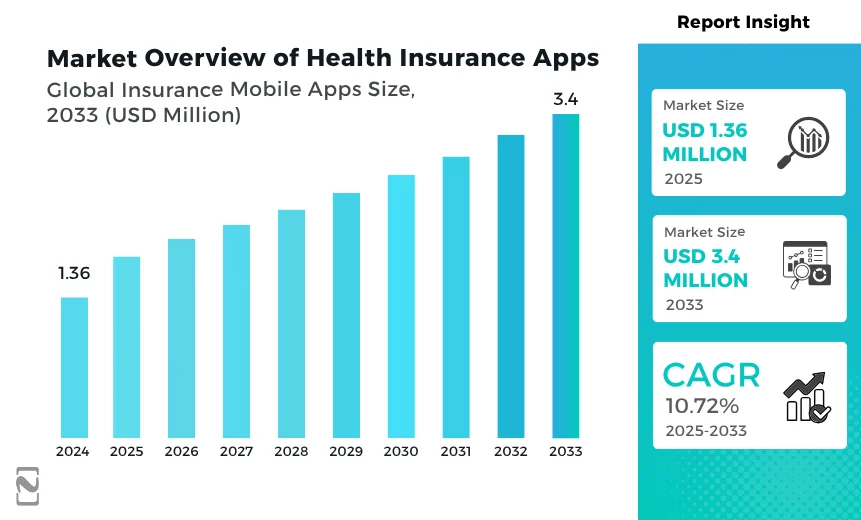
- The global market size of the health insurance sector is expected to hit $3.4 billion by 2033.
- As per Statista, on average, each person is likely to spend around $320.48 on health insurance.
- From 2025 to 2029, the market is forecast to grow by about 3.90% every year.
- Among all regions, the USA is forecast to have the largest share with a total health insurance premium of $1.8 trillion in 2025.
- Health insurance is the largest contributor to insurance markets.
How Does a Health Insurance App Work?
A health insurance app assists users in managing their policies and claims from their mobile devices. It makes the process faster, removes paperwork, and gives users a quick update. Now, let’s have a look at the working mechanism of a health insurance app.
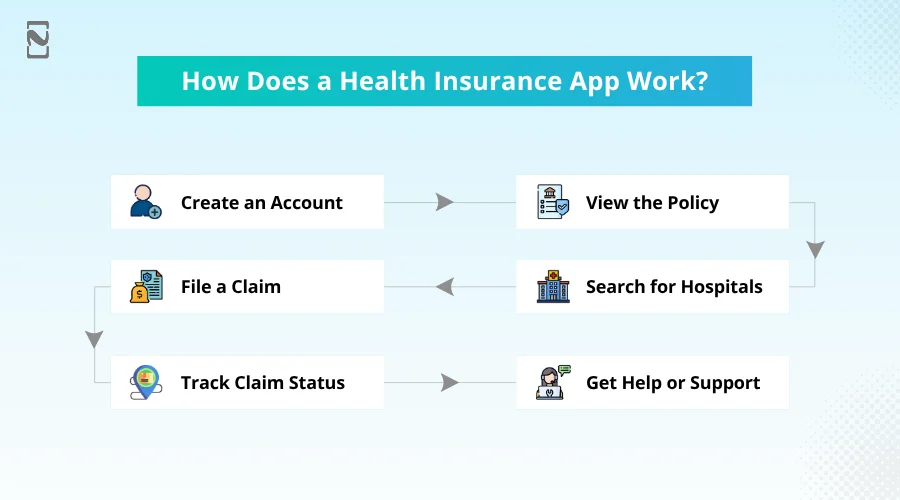
Step 1: Create an Account
Users can first make an account by using their phone number, email, or policy number. If they are already a customer, they can just log in.
Step 2: View the Policy
After logging in, users can check all health insurance details like coverage amount, what is included, and expiry date.
Step 3: Search for Hospitals
The app shows a list of hospitals or clinics near them that accept their insurance. Some apps show cashless hospitals.
Step 4: File a Claim
If a user goes to the hospital, they can submit a claim through the health insurance app by uploading documents like bills and reports.
Step 4: Track Claim Status
The health insurance app showcases updates on users’ claims. For example, it is approved, rejected, or still being checked.
Step 6: Get Help or Support
If users have any problems, they can chat or call customer support directly from the health insurance app.
Types of Health Insurance Apps
There are multiple types of health insurance applications. Each one helps users in different ways. If you are planning to develop a health insurance app, it is vital to know which type of insurance you want to build.
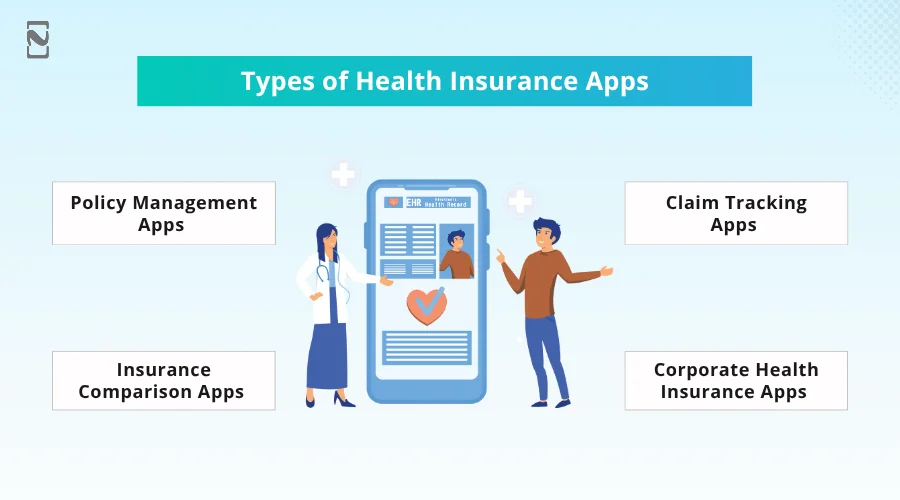
Check out the main types of health insurance apps in the section below.
1. Policy Management Apps
These policy management applications help users manage their health insurance policies. They can check what their plan covers, download their health card, update their details, or renew their policy.
Also, some applications remind them of payment due dates. For example, users can buy a health policy from a company. Instead of calling them for every small detail, they can use the app to check everything.
Popular App: Star Health, Max Bupa
2. Claim Tracking Apps
The claim tracking app assists users in tracking their insurance claims. They can upload hospital bills and other documents through the app.
It shows the status of their claim, no matter if it is approved, under review, or rejected. For example, if users go to a hospital and submits a claim for treatment, they can check how it is being processed through the app.
Popular App: Care Health
3. Insurance Comparison Apps
It is the most popular insurance comparison app that helps users compare different health insurance policies. They can see the prices, features, and benefits of various companies and select the best one.
For example, a user wants to purchase health insurance but does not know which is better. This insurance comparison app can compare and choose simply.
Popular Apps: CoverFox, Turtlemint
4. Corporate Health Insurance Apps
These are developed for employees who get health insurance from their company or office. The corporate health insurance app shows details of the group policy, coverage, and claim policy.
For instance, they can work in a company that provides them with free health insurance. The app tells them what is covered and how to use it.
Popular Apps: MediBuddy, Plum
How to Build a Health Insurance App?
If you are planning to build a health insurance app, it is vital to know that it is a big task. But it can be done step-by-step with the help of experts.
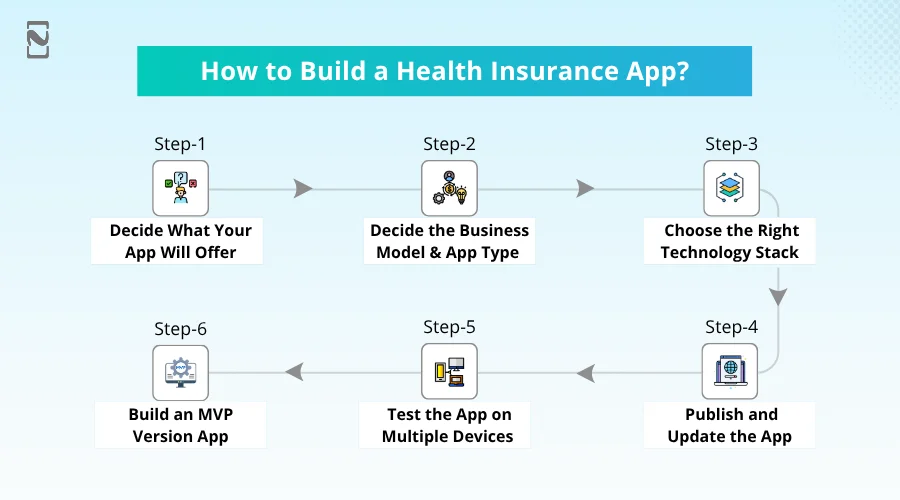
Let’s take a look at the process of health insurance application development.
Step 1: Decide What Your App Will Offer
Before you begin with health insurance app development, you need to think about what your app should do. Most users want to see their insurance plans, renew them, check claim status, and get customer support.
Also, some people want to locate nearby hospitals or download e-health cards. Now you should look at competitors’ health insurance apps. You need to decide whether your app will be for one insurance company or work like a comparison platform.
Step 2: Decide on the Business Model and App Type
Now you need to decide what type of app you are developing and how it will work as a business. Will your insurance app be for one insurance company, or will it show and compare plans from multiple companies?
Will users just view policy information, or also buy insurance through apps? You should also plan how the app will earn money.
Either through commission, subscription, or direct sales. This stage helps shape the full plan for health insurance mobile app development, design, and cost.
Step 3: Choosing the Right Technology Stack
The next stage is to choose the right tech stack to develop a health insurance app. You can select the technologies that work on both Android and iOS platforms.
Also, when you select the right stack for your app, it can affect the total cost of creating a health insurance app, especially with the incorporation of AI in insurance.
Let’s understand this with the tech stack table.
| Component | Technology |
| Front-end | Flutter or React Native |
| Back-end | Node.js, Python |
| Database | PostgreSQL or Firebase |
| Authentication | Firebase Auth and OAuth 2.0 |
| Payments | RazorPay or Stripe |
| Maps Integration | Google Maps API |
| Push Notifications | Firebase Cloud Messaging |
| Analytics | Google Analytics |
This tech stack will help you build a custom health insurance app. It is also suitable for MVP apps and full-featured applications.
Step 4: Build an MVP Version App
Here comes the main stage, which is MVP app development. To save time and budget, a healthcare app development company can begin by developing an MVP app. It is just a simple version of your app that only includes core features.
This allows you to launch faster and get early feedback. After your MVP is developed, you can integrate more advanced or customized features like hospital search, payments, push notification, chatbot, and document uploads.
Each part should be properly linked to the backend. For custom health insurance app development, an MVP assists in reducing the cost of building an app while still delivering value.
Step 5: Test the App on Multiple Devices
Once your MVP is created, it is time to test your health insurance app. You can test the app on multiple screen sizes, devices, and network conditions.
Just ensure that the app protects user data and handles errors correctly. Besides, you can do one thing–ask the real-time users to try your app and share their feedback.
If you find any errors, fix the confusing parts and slow-loading screens. Proper testing reduces future problems and enhances user satisfaction.
Step 6: Publish and Update the App
Once your health insurance app is tested successfully, you can now publish your app on the respective platforms. You just inform users through email, ads, or, of course, social media.
After deployment, it is vital to regularly update your app. You can read reviews, track app usage, and note down which features are highly used. You should thoroughly test the bugs regularly.
If you plan for future growth, you can later add features such as telemedicine and wellness tracking. Continuous updates help keep your health insurance app development bespoke.
Must-have Features of a Health Insurance App
To make your health insurance app successful, it is vital to integrate the right features. These features should make the app very simple to use for both customers and admins.
So, it is a good idea to plan carefully and add all the features that are required for both panels, including advanced features.
| User Panel | Admin Panel | Advanced Features |
| Login or Signup | Dashboard | AI-based Claim Approval |
| Buy Insurance Plans | User Management | In-app Doctor Consultation |
| View Policy Details | Policy Management | Wellness Rewards |
| Renewal Policy | Claim Management | Health Risk Calculator |
| Claim Submission | Hospital Management | Wearable Device Integration |
| Claim Status Tracker | Reports & Analytics | Policy Comparison Tool |
| Find Network Hospitals | Send Notifications | Chatbot for Instant Help |
| E-Card or ID | Payment Tracking | Multi-language Support |
| Premium Payment | Multi-Admin Support | Real-time Claim Status Updates |
| Health Records | Third-Party Integration Management | Smart Hospital Locator |
| Support Chat | Marketing & Promotions Module | Document Scanner |
How Much Does it Cost to Develop a Health Insurance App?
To provide you with a rough estimate, the health insurance app development cost can be around $25,000 – $200,000. However, various factors affect the cost of developing insurance apps, like app complexity, features, platform choice, tech stack, etc.
In other words, if you develop a highly advanced app with customized features, it increases the cost to build a health insurance app compared to a simple app with minimal features. Let’s understand this with a cost table below.
| App Complexity | Cost Estimations |
| Simple Health Insurance App | $25,000 – $70,000 |
| Intermediate Health Insurance App | $70,000 – $150,000 |
| Complex Health Insurance App | $200,000+ |
How Does a Health Insurance App Make Money?
The health insurance app makes money in various ways. For example, charging for extra health services, showing ads, freemium features, and so on. If you are planning to create a health insurance app, it is vital to monetize your app for better ROI.
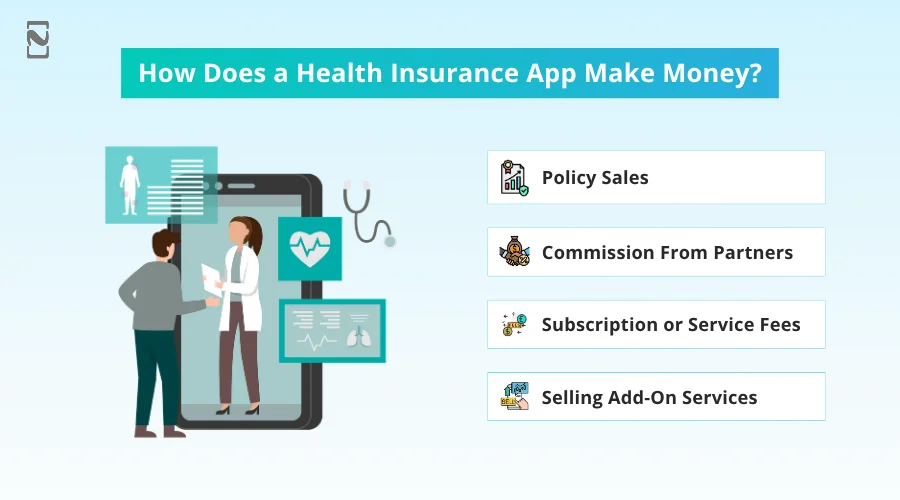
Here are the best monetization strategies that you should implement in your app.
-
Policy Sales
The biggest way a health insurance app earns money is by selling insurance plans to users. The app shows different health insurance policies and assists people in choosing and buying one.
When a user purchases a plan through the app, the company earns money. It can be from their insurance plans by working with other insurance companies and earning a share or commission on each sale.
-
Commission From Partners
Multiple health insurance apps work as a middleman between users and bigger insurance companies. When someone buys a policy from one of these partners through the app, the app earns a fixed amount or a percentage as commission. It means the health insurance app does not always have to create its own insurance plans. You can make money just by helping others sell theirs.
-
Subscription or Service Fees
Once a user buys a health insurance plan, they usually pay for it every month or annually. These payments are called premiums. If the health insurance company owns the app, then it earns regular income from these premium payments. It is a steady way for the app to earn money since users keep paying as long as they stay tuned.
-
Selling Add-On Services
Some health insurance apps provide extra paid services to assist users in better managing their health.
It might cover services like online doctor visits, lab test bookings, medicine delivery, and so on. Users can pay extra for these services, and this money goes to the app.
How Nimble AppGenie Can Help You With Health Insurance App Development?
At NimbleApp Genie, we do not just develop a health insurance app. We create intuitive, complete solutions that work well. We don’t just give advice; we work with you to create something remarkable that boosts your business.
At NimbleApp Genie, our solutions help people file claims quickly, connect with doctors online, and handle everything seamlessly for the business.
When you work with us, you’re not just getting an app; you’re partnering with people who really care about your business growth.
Let’s build something useful and future-ready together.
Conclusion
Now that you know the steps of health insurance app development, it is time to turn your idea into reality. A smart app can help people know their policies without any hassle or stress.
If you’re looking to create a visually appealing and custom-built health insurance app, the best move is to hire an experienced insurance app development company that truly understands your needs.
They can make the process faster, and with the right team, you can truly make a great difference. So, are you ready to make an app that users trust and love? Get in touch with us today and let’s develop something amazing together.
FAQs
1. Identify target users and their needs.
2. Research market trends and regulations.
3. Define features, architecture, and integrations.
4. Design user experience and interface.
5. Choose a suitable tech stack.
6. Plan deliverables, timeline, budget, and risks.
7. Develop back-end and role-based interfaces.
8. Test, launch the app, and market it.

Niketan Sharma, CTO, Nimble AppGenie, is a tech enthusiast with more than a decade of experience in delivering high-value solutions that allow a brand to penetrate the market easily. With a strong hold on mobile app development, he is actively working to help businesses identify the potential of digital transformation by sharing insightful statistics, guides & blogs.
Table of Contents

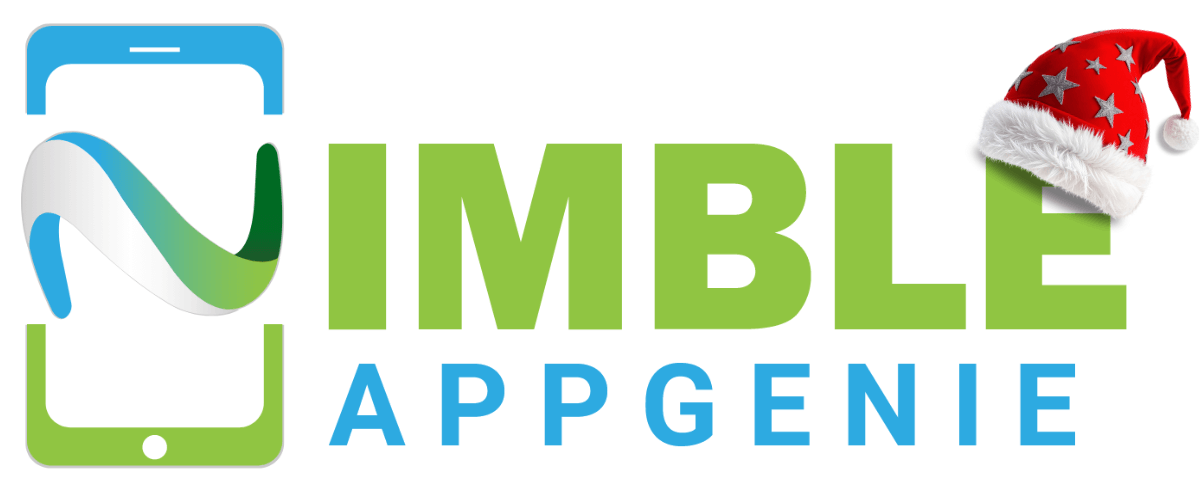



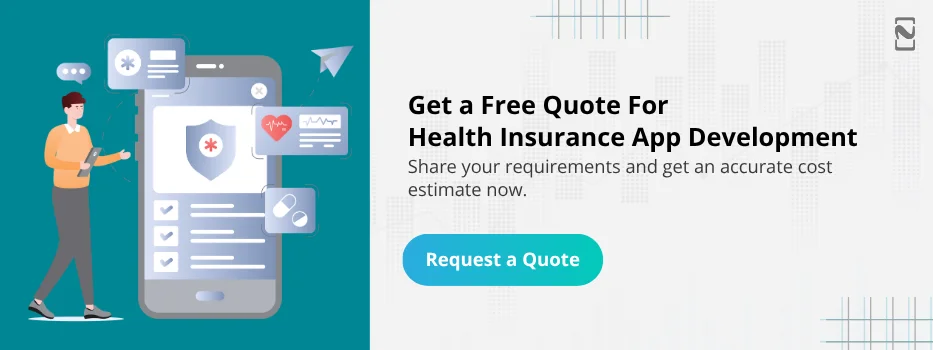
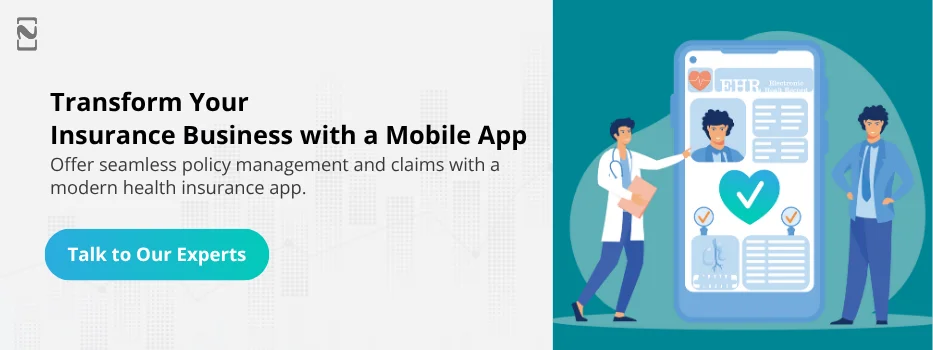
No Comments
Comments are closed.